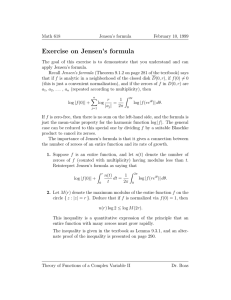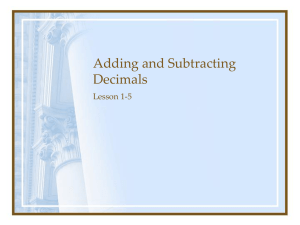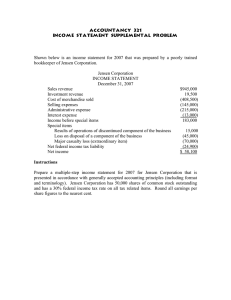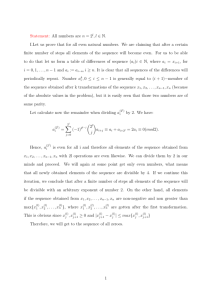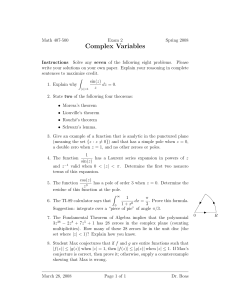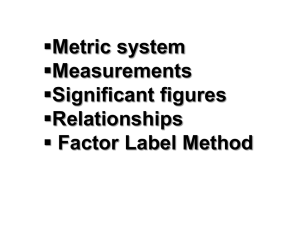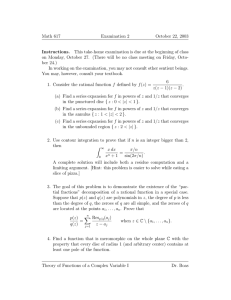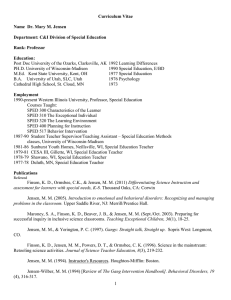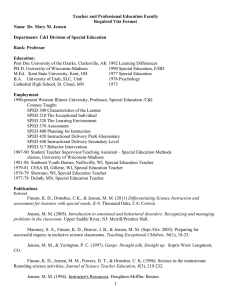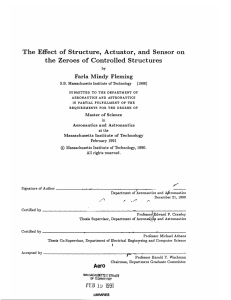Exercise on Jensen’s formula
advertisement
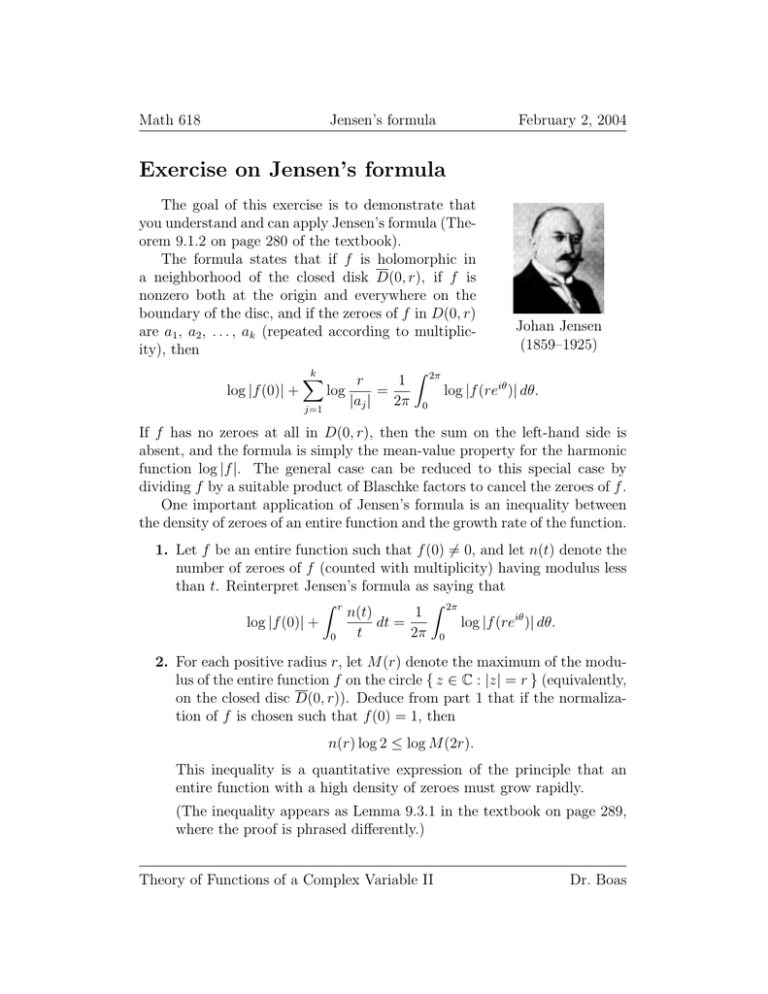
Math 618
Jensen’s formula
February 2, 2004
Exercise on Jensen’s formula
The goal of this exercise is to demonstrate that
you understand and can apply Jensen’s formula (Theorem 9.1.2 on page 280 of the textbook).
The formula states that if f is holomorphic in
a neighborhood of the closed disk D(0, r), if f is
nonzero both at the origin and everywhere on the
boundary of the disc, and if the zeroes of f in D(0, r)
Johan Jensen
are a1 , a2 , . . . , ak (repeated according to multiplic(1859–1925)
ity), then
Z 2π
k
X
1
r
=
log
log |f (reiθ )| dθ.
log |f (0)| +
|a
|
2π
j
0
j=1
If f has no zeroes at all in D(0, r), then the sum on the left-hand side is
absent, and the formula is simply the mean-value property for the harmonic
function log |f |. The general case can be reduced to this special case by
dividing f by a suitable product of Blaschke factors to cancel the zeroes of f .
One important application of Jensen’s formula is an inequality between
the density of zeroes of an entire function and the growth rate of the function.
1. Let f be an entire function such that f (0) 6= 0, and let n(t) denote the
number of zeroes of f (counted with multiplicity) having modulus less
than t. Reinterpret Jensen’s formula as saying that
Z r
Z 2π
1
n(t)
log |f (0)| +
dt =
log |f (reiθ )| dθ.
t
2π
0
0
2. For each positive radius r, let M (r) denote the maximum of the modulus of the entire function f on the circle { z ∈ C : |z| = r } (equivalently,
on the closed disc D(0, r)). Deduce from part 1 that if the normalization of f is chosen such that f (0) = 1, then
n(r) log 2 ≤ log M (2r).
This inequality is a quantitative expression of the principle that an
entire function with a high density of zeroes must grow rapidly.
(The inequality appears as Lemma 9.3.1 in the textbook on page 289,
where the proof is phrased differently.)
Theory of Functions of a Complex Variable II
Dr. Boas
